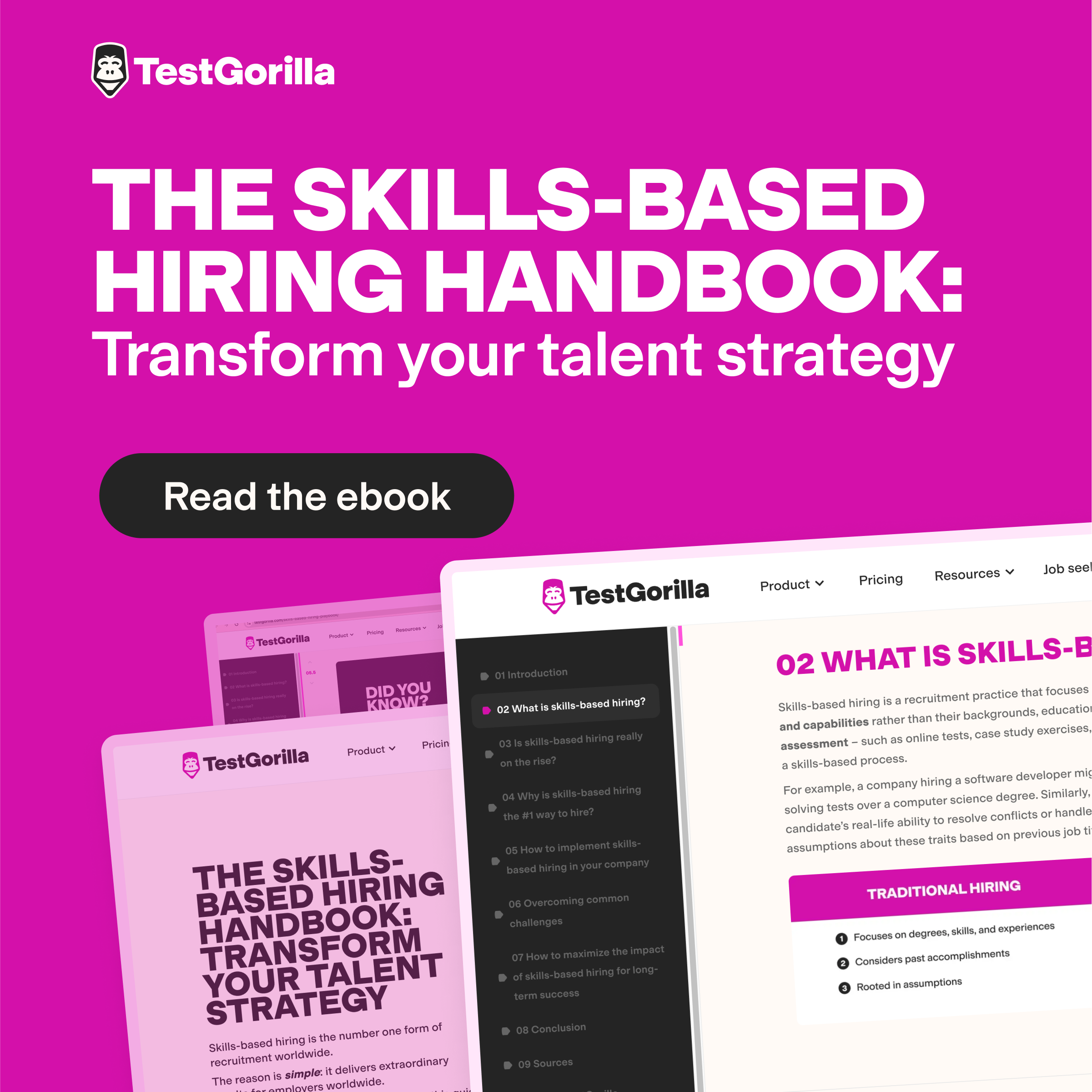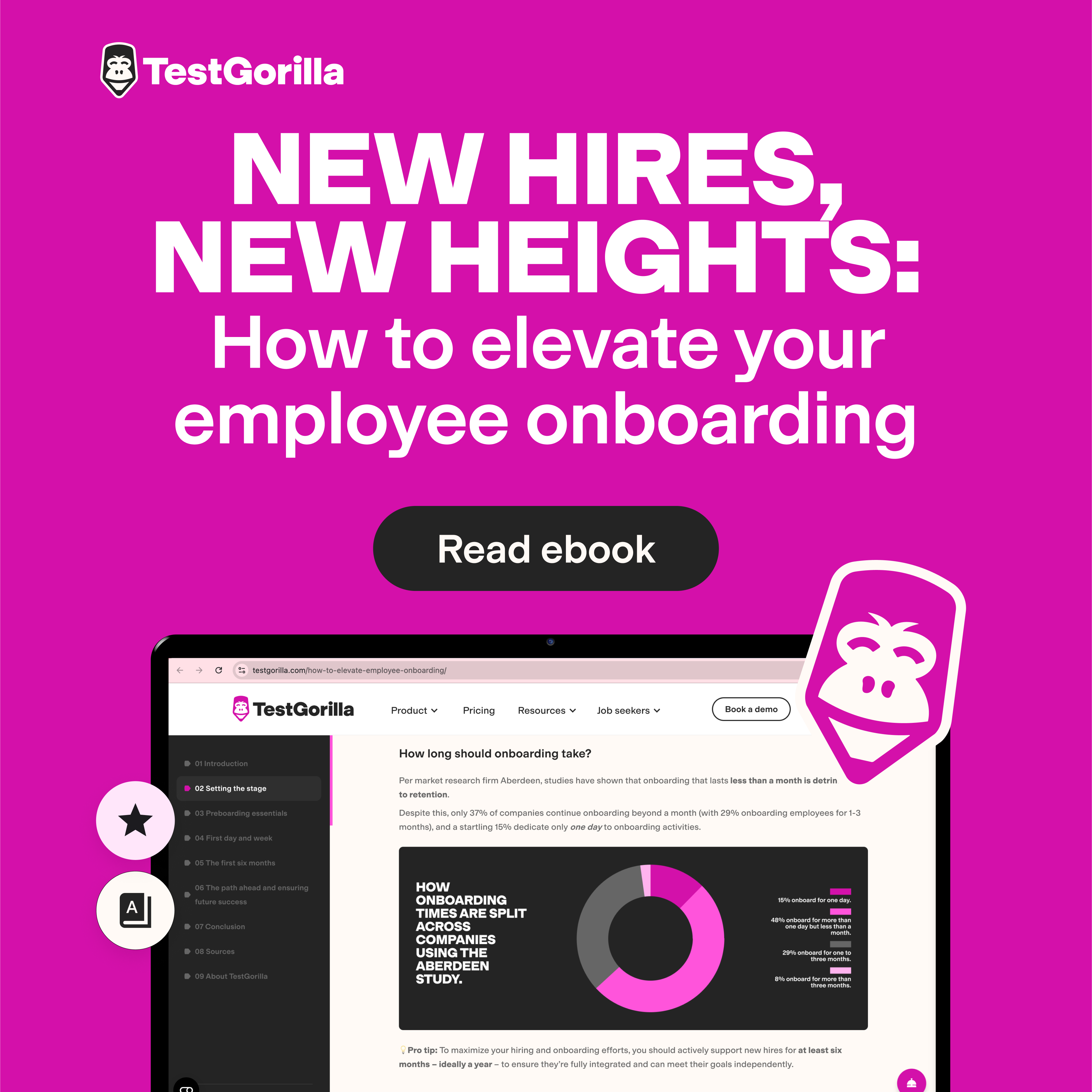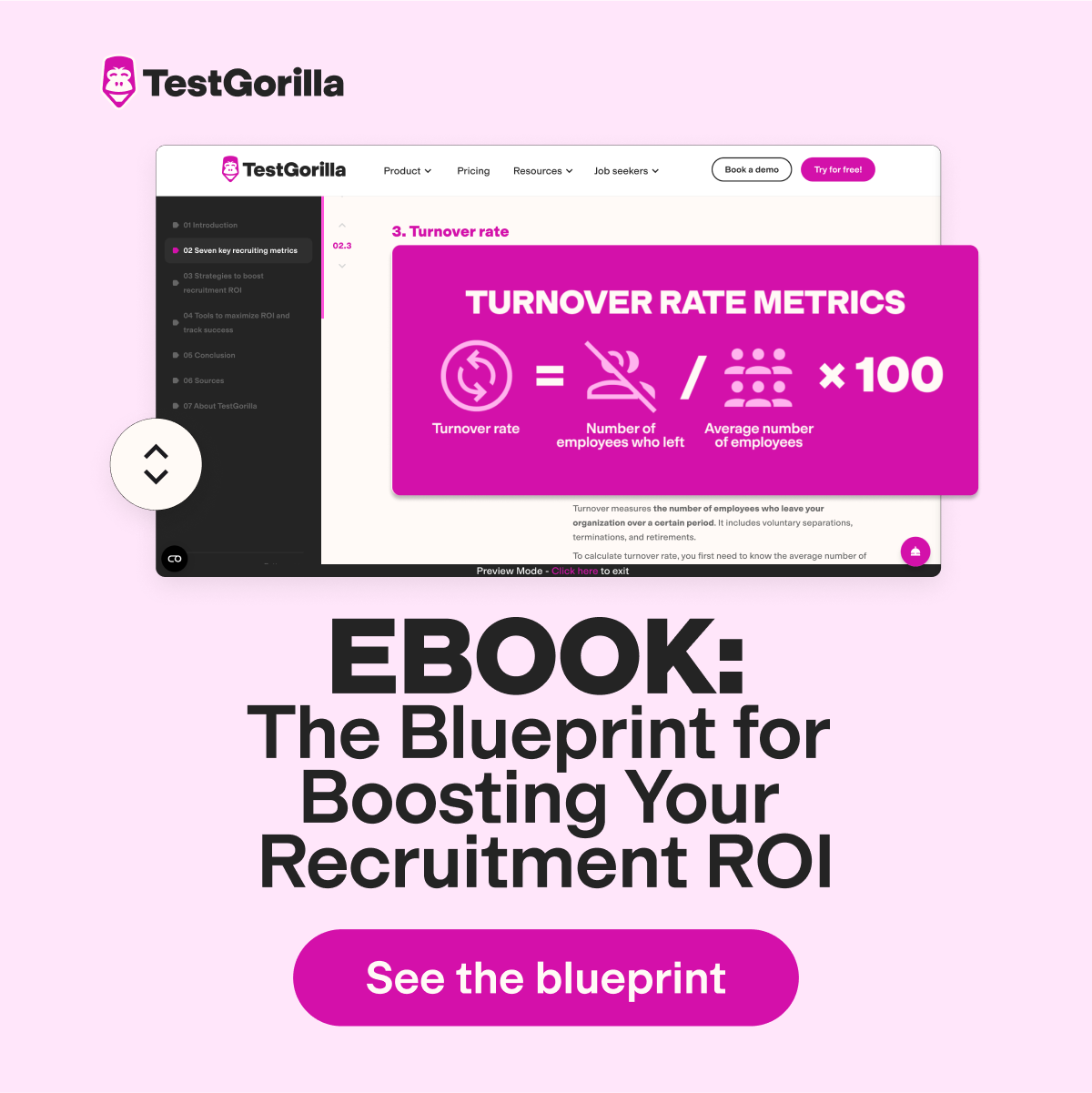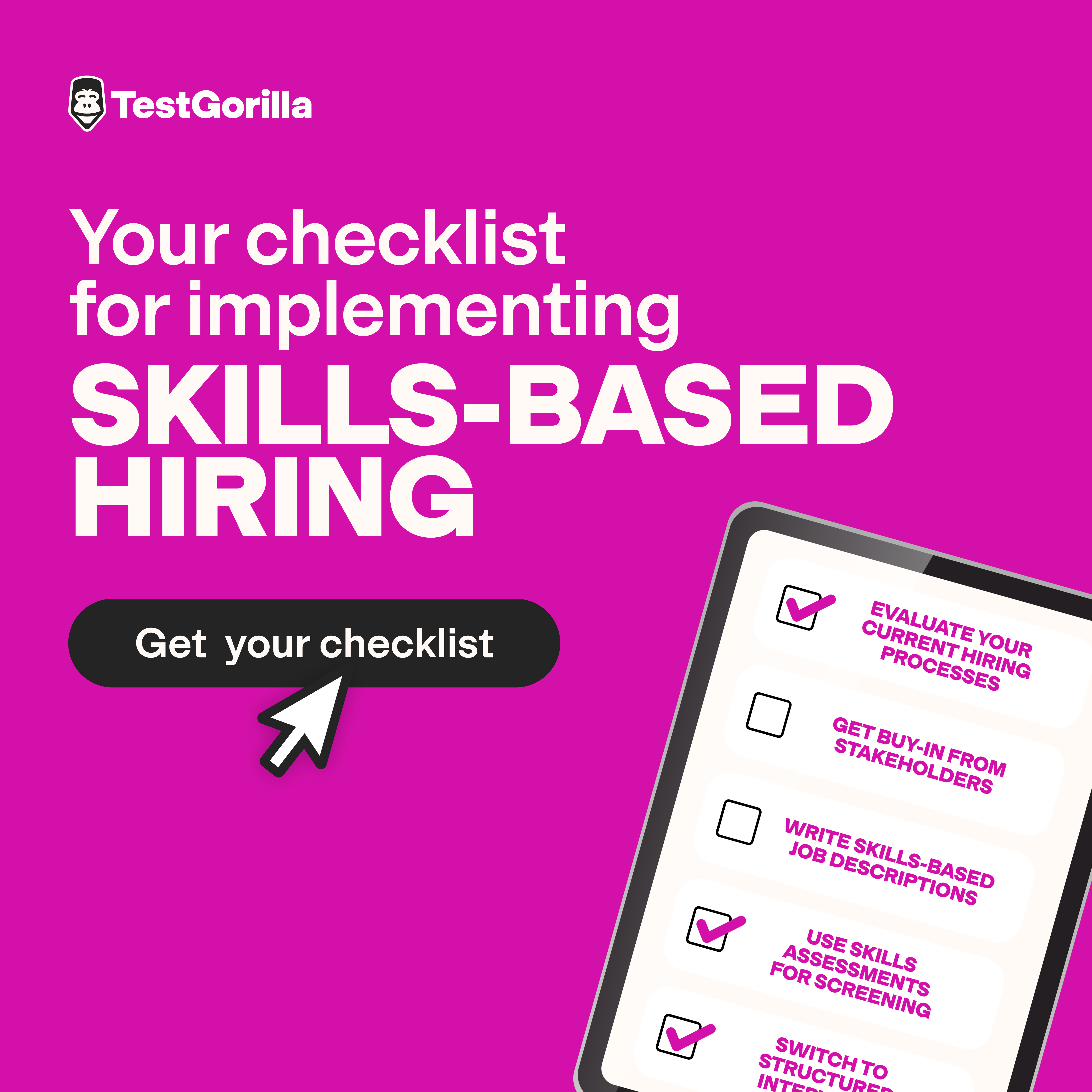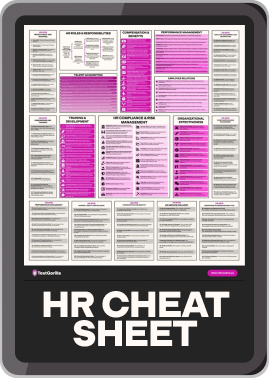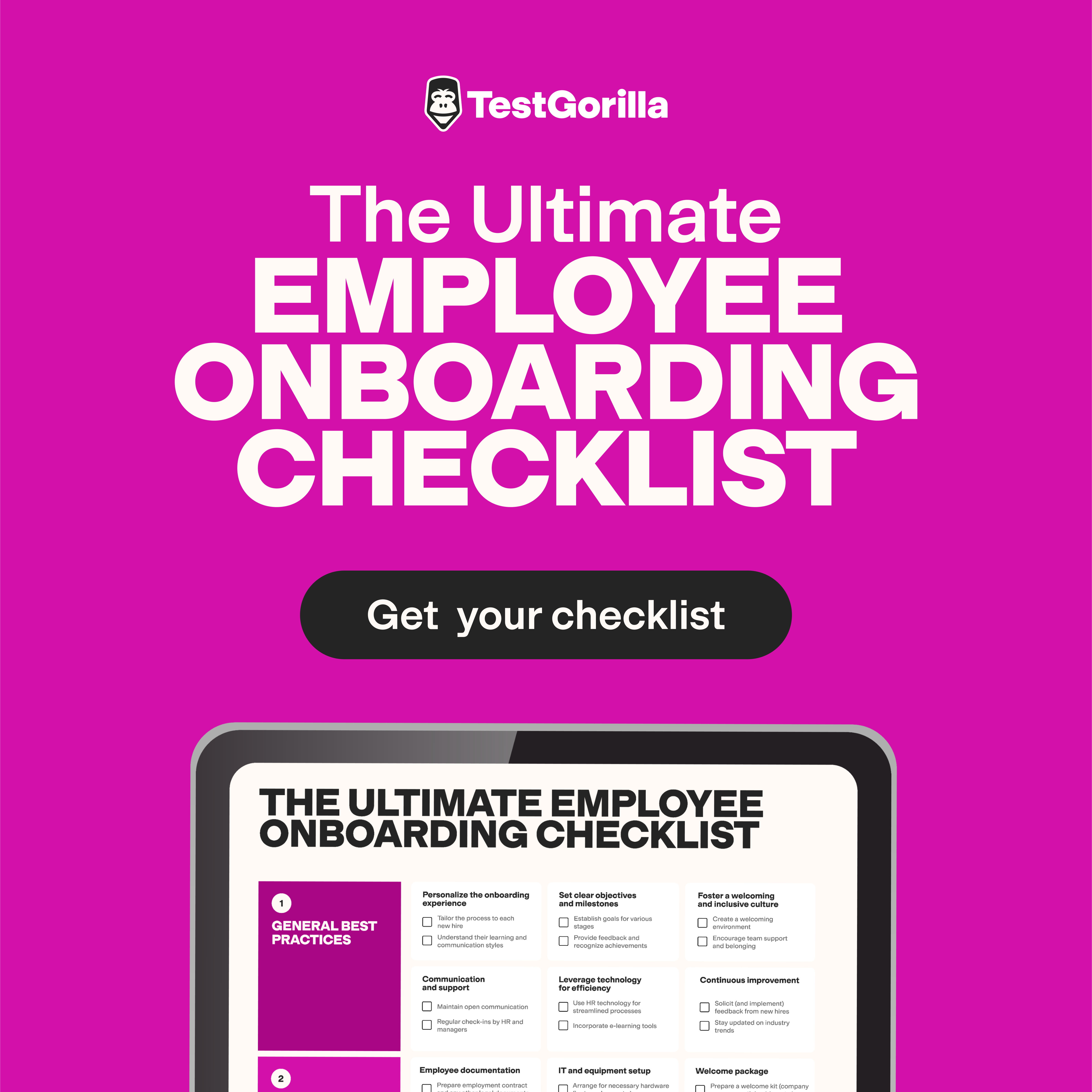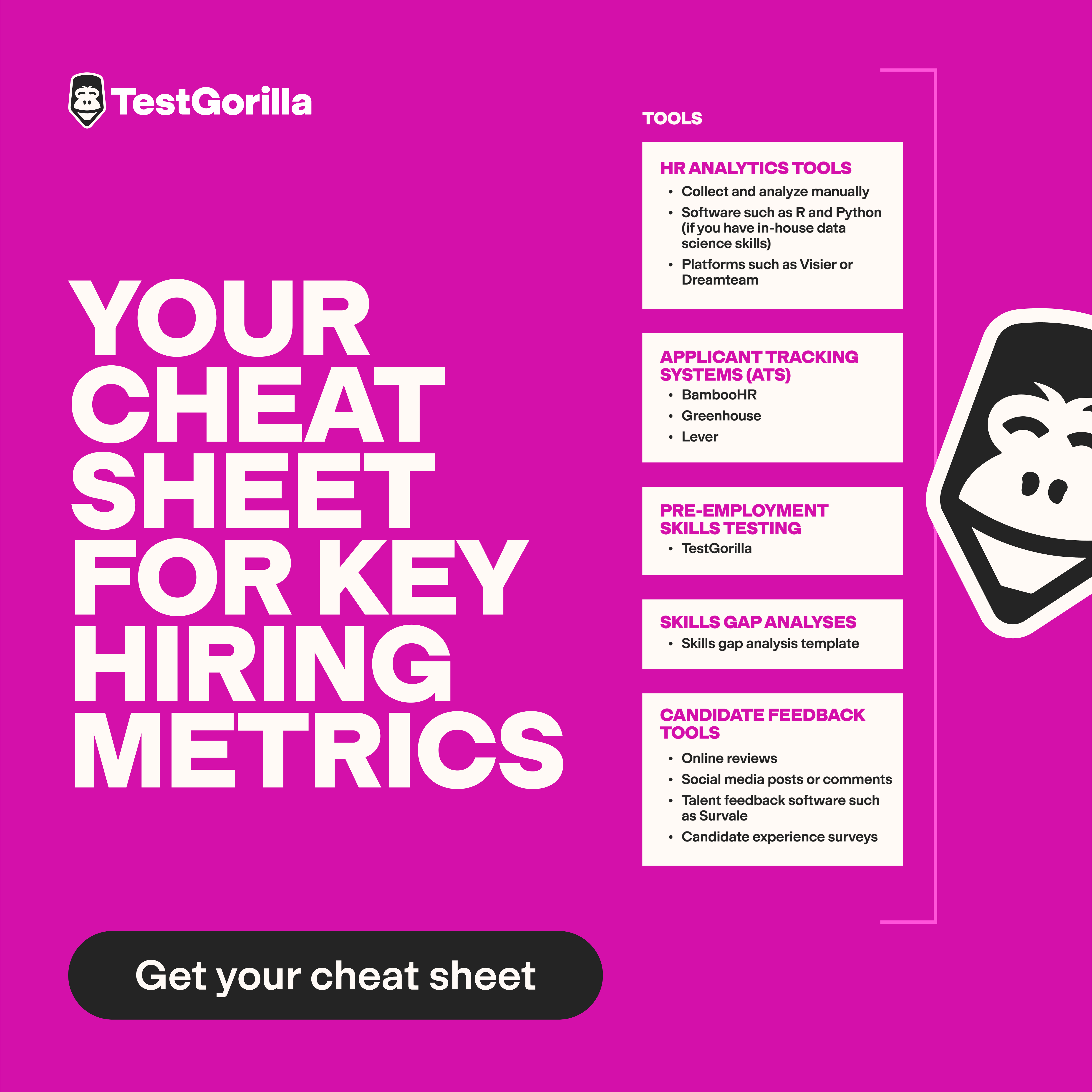Contracts of employment are key business documents that set out the terms and conditions of employment and protect your business against any misunderstandings or disputes. Get these documents wrong, and you could end up with misaligned employer and employee expectations, face legal disputes, and more.
Read on to learn all about the complexities of contracts of employment. We’ll talk about what a contract of employment is and share some key elements to include – equipping you with everything you need to create your employment contracts.
What is an employment contract?
A contract of employment is a business-critical, legally binding document that sets out the rights and responsibilities of both you and your employee. It’s essentially an agreement between you and your employee.
Contracts of employment should include all the terms and conditions of employment – for example, the employee’s salary, their usual working hours, details of paid time off (PTO), notice periods, a reference to the policies they’re bound by, non-disclosure agreements (NDAs), and anything else you feel is relevant to their employment.
This is a formal document, and you must keep a copy to refer to at a later date. The employment contract should be recorded in hard copy or digital form. Referencing it can help you clear up any misunderstandings, protect both you and your employee, and make sure everyone knows where they stand.
Pro tip: Some states, such as New York, require employers to provide new hires with written offer letters detailing the employee’s pay rate and expected payday. This is a critical hiring step, but you should be aware that detailed offer letters don’t function as employee contracts. Be sure to check if your state has any specific legal requirements before offering contracts of employment.
When should you offer an employment contract?
US employment law doesn’t require you to enter into an employment contract with every new hire. However, you might want to – depending on your situation.
Many employees in the US are in “at-will” employment relationships, meaning the employer or employee can end the working relationship at any time, for any reason – except for illegal reasons like discrimination. In many states, employees are at-will employees by default, and most employers choose not to offer employment contracts to workers to preserve the at-will nature of those employment relationships.
Entering an employment contract can make it more difficult to terminate an employee. However, not having a formal contract can cause confusion between the employer and the employee. Key details like salary, working hours, notice periods, and other key information can be lost in translation, leading to misunderstandings, disputes, and stress for both parties. Being clear on the terms and conditions of employment from the get-go can prevent unnecessary stress.
Contracts of employment can be beneficial to all types of employees. However, they’re especially useful when it comes to hiring executives and high-level employees. These employees usually command high salaries and can have a lasting impact on your business. An employment contract can define performance objectives tied to compensation. It can also protect your business if the employee leaves by limiting their ability to compete with your business.
The best insights on HR and recruitment, delivered to your inbox.
Biweekly updates. No spam. Unsubscribe any time.
Types of contracts of employment
There are several different types of contracts of employment. Here are some employment contract examples:
Full-time contract. These contracts are for employees who work over 35 hours per week. They typically lay out all aspects of the full-time workers’ employment – from job responsibilities to compensation to conditions of employment.
Part-time contract. These contracts are for employees who work under 35 hours per week. They often outline the specifics of part-time employment – such as job duties, rate of pay, and any eligibility for benefits (which is often limited compared with full-time positions).
Fixed-term contract. A fixed-term or temporary contract has either a designated end date – or a clause stating that the contract will end with the completion of a specific project. Six, 12, or 18-month fixed-term contracts are common, but these contracts can be for any length of time depending on the needs of the business.
Agency staff contract. These contracts are for agency staff who’ve been hired to work at your business. The terms should mirror the terms of their agency contracts, with slight variations based on the nature of the work needed at your company.
Zero-hours contract. A zero-hours contract is for any employees who aren’t guaranteed working hours – for example, those working in hospitality, retail, or other seasonal industries where demand varies.
What’s the difference between a service agreement and a contract of employment?
While a contract of employment establishes the employer-employee relationship and includes details like salary, working hours, and benefits, a service agreement defines what you expect from service professionals, such as project deliverables. It’s more focused on the actual work being done – rather than the relationship.
Many businesses contract with service professionals like freelancers and independent contractors to complete time-bound limited projects or tasks. These service professionals are self-employed – they work independently and manage their business operations separately from yours.
There’s no need to extend an employment contract to these workers. These individuals aren’t your employees and shouldn’t enter into an employment contract. Even accidentally including employment agreement language in a service agreement could make your business liable to treat that provider as an employee concerning hour tracking, pay, and tax recording.
A service agreement should define what you expect from service professionals, such as the scope of work and deadlines for project deliverables. Your service agreement will also lay out the timing and methods for payment.
Be aware that some states, such as California, restrict when a business can consider its workers independent contractors instead of employees. Some of these limitations intend to ensure that workers receive employment benefits and protections.
What is included in a contract of employment?
An employment contract can be as brief or as detailed as you’d like. It can define only parts of the employment relationship – for example, how you’ll manage employment disputes – or it can be an extensive agreement covering many factors, like compensation and working hours.
Consider including the following key elements to ensure all your bases are covered:
Identification of parties. Clearly states the legal names and contact information of you and your employee.
Job title. States the employee’s job title, as well as which job family or broad team they belong to.
Job description. Describes your employee's role, responsibilities, and reporting structure.
Start date. Lists the date on which the contract of employment starts and your employee’s service begins.
Employment type. Indicates whether the employment is full-time, part-time, temporary, or seasonal.
Place of work. Includes the full address of the employee’s primary place of work. If they’re remote or hybrid, the contract should state this. If their place of employment is subject to change, you should clarify the terms of this.
Working hours. Outlines the expected working hours, including daily or weekly hours, and any flexibility in start and end times.
Salary. Details base salary or hourly wage, bonuses, stock options, commissions, and other forms of payment. This may also include pay frequency (e.g., bi-weekly or monthly).
Benefits. Details your employee's entitlement to benefits, such as health insurance, sick pay, PTO, dental coverage, retirement plans, pension provisions, and any other perks or allowances.
Working hours. Specifies your employee’s regular working hours. This term may include regular starting and ending times and any overtime or shift work expectations.
Probationary period. Sometimes includes a probationary period where you’ll closely evaluate your employee's performance to determine if they’re a good fit before bringing them aboard as a permanent employee.
Termination. Outlines the steps for terminating the employment relationship. For example, the term may require a notice period from you or your employee before termination. It may also specify reasons for firing the employee immediately, like if they behave unethically or unprofessionally.
Employment duration. Indicates if employment is for a set period or indefinite. If it's for a set period, the contract usually explains how it can be renewed or not renewed when that time is up.
Non-compete and non-solicitation. Restricts your employees from working for competitors or soliciting your company’s clients, customers, or employees after their employment ends. Some states have laws limiting the enforceability of these terms.
Grievance process. Briefly outlines the terms of the grievance process and how the employee can raise a grievance.
Disciplinary process. Briefly outlines the terms of the disciplinary process and how it applies to employees.
Dispute resolution. Outlines the process for resolving disputes between you and your employee. This may include an agreement to submit your disputes to a neutral third party – called an arbitrator – rather than pursuing a court trial. The arbitrator will hear the dispute and issue a binding decision to resolve it.
Governing law. Specifies which state or jurisdiction's laws govern the agreement and any disputes. It’s often the state where your employee will perform the work.
Confidentiality. Outlines protections for your company's confidential information and intellectual property. This may include giving ownership of intellectual property rights for things the employee creates during the contract term to your company.
Severability. Ensures that if anyone finds part of the contract invalid or unenforceable, the rest of the terms remain in effect.
Signatures and dates. Includes places where both you and your employee should sign and date the contract to indicate your agreement to its terms.
The specific terms in employment contracts can vary based on local legal requirements, industry norms, and the nature of the employment. For example, industries like entertainment and sports rely heavily on extensive employment contracts due to the unique nature of the work performed and the complex compensation structure offered to many employees.
Meanwhile, employers in states like Illinois may want to think twice before including non-compete or non-solicitation terms in their employment contracts because they must carefully word those terms to meet state law requirements.
What are implied terms?
Implied terms are terms that aren’t explicitly communicated or written into the terms of a contract but are still implied as part of the employment relationship.
For example, if your employees are expected to drive as part of their role, an implied term is that they won’t break any traffic or speeding laws. These federal laws apply to everyone, and the employee is expected to comply with them even if they're not directly stated in the job description or contract. (The same goes for employment laws that employers are meant to follow.)
Implied terms also include the implied obligation to act in good faith (this is referred to as “ the covenant of good faith and fair dealing”). This means each party should act honestly and reasonably towards each other during their employment relationship.
Want to learn more about topics related to employment contract law? Explore our guide to employment contract law for HR managers.
Find your next great hire with TestGorilla before you enter an employment contract
As with any formal legal agreement, you should think carefully before offering an employment contract. Ensure you understand when using an employment contract benefits your business, and consider which terms best meet your needs. You’ll typically use employment contracts for temporary hires and high-level employees.
Whether you’re hiring several temporary holiday workers or a high-level executive, hiring the right person for the job is vital. Skills-based testing is the best way to assess candidates at all levels, and it’s more accurate than relying on resumes or interviews alone.
TestGorilla’s talent assessments streamline your hiring process and promote fairness. You can combine various tests from the comprehensive test library to assess job skills and personality. This gives you a well-rounded view of each candidate – so by the time you’re ready to sign an employment contract, you can be confident you’ve found the best candidate.
Get started with TestGorilla today or schedule a quick product demo.
You've scrolled this far
Why not try TestGorilla for free, and see what happens when you put skills first.








